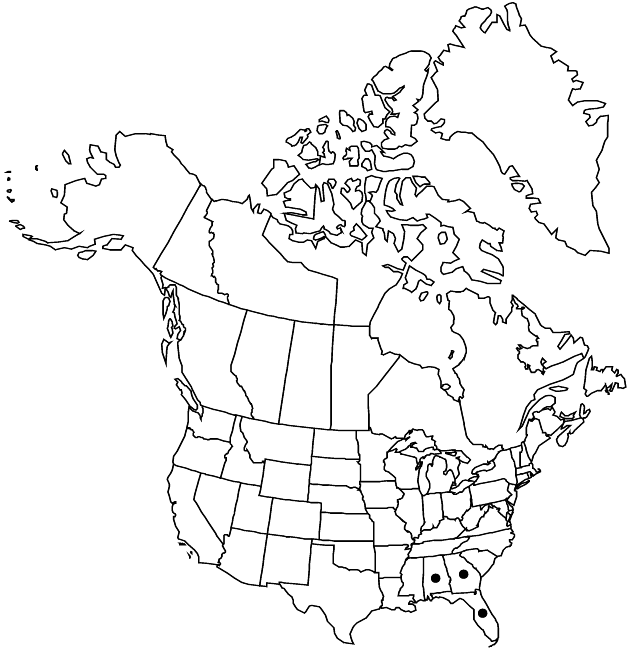Liatris chapmanii
Fl. N. Amer. 2: 502. 1843.
Plants 35–75 (–150) cm. Corms globose to elongate. Stems hirtellous. Leaves: basal and proximal cauline 1-nerved, spatulate-oblanceolate to narrowly oblanceolate, 40–150 (–180) × 4–8 (–11) mm, abruptly reduced (linear, 1–2 mm wide), then gradually reduced distally, essentially glabrous or hirtellous (sometimes mostly along abaxial midveins), glanddotted. Heads (appressed, overlapping) in dense, spiciform arrays. Peduncles 0. Involucres cylindric, 8–12 × 3.5–5 mm. Phyllaries in 3 (–4) series, oblong to oblong-lanceolate, unequal, usually glabrous, rarely minutely puberulent, margins with hyaline borders, apices acute to acuminate. Florets 3–4; corolla-tubes glabrous inside. Cypselae (3–) 4–6 mm; pappi: lengths ± equaling corollas, bristles barbellate. 2n = 20.
Phenology: Flowering Aug–Oct.
Habitat: Dunes, beach strands, sand ridges, fields, roadsides, longleaf pine savannas, longleaf pine-turkey oak, turkey oak, evergreen oak-sand pine-scrub, scrub with Ceratiola and Pinus clausa
Elevation: 0–50 m
Distribution

Ala., Fla., Ga.
Discussion
Selected References
None.
Lower Taxa
"barbellate" is not a number."fine" is not a number.